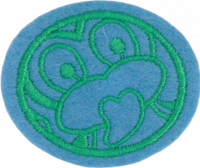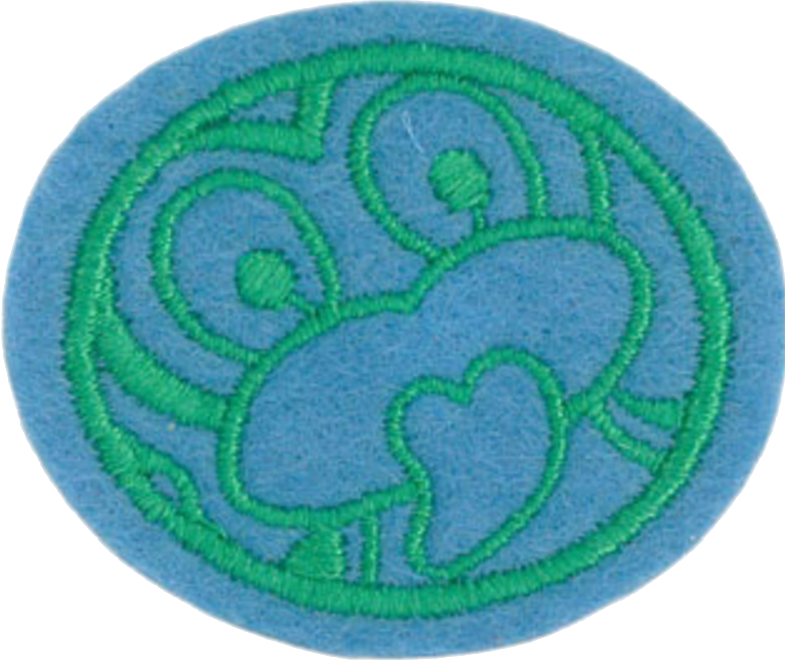Difference between revisions of "AY Honors/Māori Lore/Answer Key 2/es"
(Created page with "{{clear}}") |
(Created page with "{{clear}}") |
||
| Line 364: | Line 364: | ||
{{clear}} | {{clear}} | ||
| − | + | <noinclude></noinclude> | |
| − | <noinclude | ||
| − | |||
{{CloseReq}} <!-- 6 --> | {{CloseReq}} <!-- 6 --> | ||
{{ansreq|page={{#titleparts:{{PAGENAME}}|2|1}}|num=7}} | {{ansreq|page={{#titleparts:{{PAGENAME}}|2|1}}|num=7}} | ||
| Line 375: | Line 373: | ||
</div></noinclude> | </div></noinclude> | ||
{{ansreq|page={{#titleparts:{{PAGENAME}}|2|1}}|num=7a}} | {{ansreq|page={{#titleparts:{{PAGENAME}}|2|1}}|num=7a}} | ||
| − | <noinclude> | + | <noinclude></noinclude> |
| − | </noinclude | ||
| − | |||
| − | |||
| − | + | {{clear}} | |
| − | |||
| − | |||
| − | |||
| − | |||
| − | + | <noinclude></noinclude> | |
| − | <noinclude | ||
| − | |||
{{CloseReq}} <!-- 7a --> | {{CloseReq}} <!-- 7a --> | ||
{{ansreq|page={{#titleparts:{{PAGENAME}}|2|1}}|num=7b}} <!--T:104--> | {{ansreq|page={{#titleparts:{{PAGENAME}}|2|1}}|num=7b}} <!--T:104--> | ||
| − | <noinclude> | + | <noinclude></noinclude> |
| − | </noinclude | ||
| − | |||
| − | |||
| − | |||
| − | + | {{clear}} | |
| − | |||
| − | |||
| − | + | {{clear}} | |
| − | |||
| − | |||
| − | + | {{clear}} | |
| − | |||
| − | |||
| − | + | {{clear}} | |
| − | |||
| − | |||
| − | + | {{clear}} | |
| − | |||
| − | |||
| − | + | <noinclude></noinclude> | |
| − | <noinclude | ||
| − | |||
{{CloseReq}} <!-- 7b --> | {{CloseReq}} <!-- 7b --> | ||
{{CloseReq}} <!-- 7 --> | {{CloseReq}} <!-- 7 --> | ||
| Line 428: | Line 401: | ||
</div> | </div> | ||
| − | + | <noinclude></noinclude> | |
| − | <noinclude | ||
| − | |||
{{ansreq|page={{#titleparts:{{PAGENAME}}|2|1}}|num=8a}} <!--T:110--> | {{ansreq|page={{#titleparts:{{PAGENAME}}|2|1}}|num=8a}} <!--T:110--> | ||
| − | <noinclude> | + | <noinclude></noinclude> |
| − | </noinclude | ||
| − | |||
| − | + | {{clear}} | |
| − | |||
| − | |||
| − | |||
| − | + | {{clear}} | |
| − | |||
| − | |||
| − | |||
| − | |||
| − | + | {{clear}} | |
| − | |||
| − | |||
| − | |||
| − | |||
{{clear}} | {{clear}} | ||
| − | |||
| − | + | {{clear}} | |
| − | |||
| − | |||
| − | |||
| − | + | {{clear}} | |
| − | |||
| − | |||
| − | |||
| − | + | {{clear}} | |
| − | |||
| − | |||
| − | |||
| − | |||
| − | |||
| − | |||
| − | |||
| − | + | <noinclude></noinclude> | |
| − | <noinclude | ||
| − | |||
{{CloseReq}} <!-- 8a --> | {{CloseReq}} <!-- 8a --> | ||
{{ansreq|page={{#titleparts:{{PAGENAME}}|2|1}}|num=8b}} <!--T:118--> | {{ansreq|page={{#titleparts:{{PAGENAME}}|2|1}}|num=8b}} <!--T:118--> | ||
| − | <noinclude> | + | <noinclude></noinclude> |
| − | </noinclude | ||
| − | |||
| − | |||
| − | |||
| − | + | {{clear}} | |
| − | |||
| − | |||
| − | |||
| − | + | {{clear}} | |
| − | |||
| − | |||
| − | |||
| − | |||
| − | |||
{{clear}} | {{clear}} | ||
| − | |||
| − | + | <noinclude></noinclude> | |
| − | <noinclude | ||
| − | |||
{{CloseReq}} <!-- 8b --> | {{CloseReq}} <!-- 8b --> | ||
{{CloseReq}} <!-- 8 --> | {{CloseReq}} <!-- 8 --> | ||
| Line 512: | Line 439: | ||
</div> | </div> | ||
| − | + | <noinclude></noinclude> | |
| − | <noinclude | ||
| − | |||
{{ansreq|page={{#titleparts:{{PAGENAME}}|2|1}}|num=9a}} <!--T:138--> | {{ansreq|page={{#titleparts:{{PAGENAME}}|2|1}}|num=9a}} <!--T:138--> | ||
| − | <noinclude> | + | <noinclude></noinclude> |
| − | </noinclude | ||
| − | |||
| − | + | <noinclude></noinclude> | |
| − | <noinclude | ||
| − | |||
{{CloseReq}} <!-- 9a --> | {{CloseReq}} <!-- 9a --> | ||
{{ansreq|page={{#titleparts:{{PAGENAME}}|2|1}}|num=9b}} <!--T:139--> | {{ansreq|page={{#titleparts:{{PAGENAME}}|2|1}}|num=9b}} <!--T:139--> | ||
| − | <noinclude> | + | <noinclude></noinclude> |
| − | </noinclude | ||
| − | |||
| − | + | <noinclude></noinclude> | |
| − | <noinclude | ||
| − | |||
{{CloseReq}} <!-- 9b --> | {{CloseReq}} <!-- 9b --> | ||
{{ansreq|page={{#titleparts:{{PAGENAME}}|2|1}}|num=9c}} <!--T:140--> | {{ansreq|page={{#titleparts:{{PAGENAME}}|2|1}}|num=9c}} <!--T:140--> | ||
| − | <noinclude> | + | <noinclude></noinclude> |
| − | </noinclude | ||
| − | |||
| − | + | {{clear}} | |
| − | |||
| − | |||
| − | + | {{clear}} | |
| − | |||
| − | |||
| − | + | {{clear}} | |
| − | |||
| − | |||
| − | + | {{clear}} | |
| − | |||
| − | |||
| − | |||
<div lang="en" dir="ltr" class="mw-content-ltr"> | <div lang="en" dir="ltr" class="mw-content-ltr"> | ||
| Line 575: | Line 481: | ||
</div> | </div> | ||
| − | + | {{clear}} | |
| − | |||
| − | |||
| − | |||
| − | + | {{clear}} | |
| − | |||
| − | |||
| − | + | {{clear}} | |
| − | |||
| − | |||
| − | + | <noinclude></noinclude> | |
| − | <noinclude | ||
| − | |||
{{CloseReq}} <!-- 9c --> | {{CloseReq}} <!-- 9c --> | ||
{{CloseReq}} <!-- 9 --> | {{CloseReq}} <!-- 9 --> | ||
| − | <noinclude> | + | <noinclude></noinclude> |
| − | </noinclude> | + | ==Referencias= |
| − | == | ||
| − | |||
| − | |||
| − | |||
| − | |||
| − | |||
| − | |||
| − | |||
| − | + | [[Category:Adventist Youth Honors Answer Book/es]] | |
| − | [[Category:Adventist Youth Honors Answer Book | + | <noinclude></noinclude> |
| − | <noinclude | ||
| − | |||
{{CloseHonorPage}} | {{CloseHonorPage}} | ||
Revision as of 18:46, 29 April 2021
Nivel de destreza
1
Año
Desconocido
Version
29.12.2025
Autoridad de aprobación
División Norteamericana
Waiata is the Māori word for song.
In the Māori language, Tāne means "man".
Tukutuku
A tukutuku is a woven wall hanging traditionally made from flax. New Zealand flax describes common New Zealand perennial plants Phormium tenax and Phormium cookianum, known by the Māori names harakeke and wharariki respectively. They are quite distinct from Linum usitatissimum, the Northern Hemisphere plant known as flax (and also known as linseed). The genus was given the common name 'flax' by Anglophone Europeans as it too could be used for its fibres.
Their main defense was the use of earth ramparts (or terraced hillsides), topped with stakes or wicker barriers. The historically later versions were constructed by people who were fighting with muskets and hand weapons (such as spear, taiaha and mere) against the British Army and armed constabulary, who were armed with swords, rifles, and heavy weapons such as howitzers and rocket artillery.
Pā were often put in place in very limited time scales, sometimes less than two days, and resisted attack for many hours and, sometimes, weeks. Military historians like John Keegan have noted that Māori recognition of the strong resistance of earth fortifications against modern weapons (especially artillery) predates the successful defensive use of trenches and sloped earth ramparts in World War I by many decades.
Warrior chiefs like Te Ruki Kawiti realised these properties as a good counter to the greater firepower of the British. With that in mind, they sometimes built pā purposefully to resist the British Empire's forces, like at Ruapekapeka, which was constructed specifically to draw the enemy, instead of protecting a specific site or place of habitation like more traditional pās. At the Battle of Ruapekapeka, the British suffered 45 casualties, against only 30 amongst the Māori. Afterwards, British engineers twice surveyed the fortifications, produced a scale model and tabled the plans in the House of Commons.
The fortifications of such a purpose-built pa included palisades of puriri trunks and split timber, with bundles of protective flax padding, the two lines of palisade covering a firing trench with individual pits, while more defenders could use the second palisade to fire over the heads of the first below. Simple communication trenches or tunnels were also built to connect the various parts, as found at Ohaeawai Pā or Ruapekapeka. The forts could even include underground bunkers, protected by a thick layer of earth over wooden beams, which sheltered the inhabitants during periods of heavy shelling by artillery.
A limiting factor of the Māori fortifications that were not built as set pieces, however, was the need for the people inhabiting them to leave frequently to cultivate areas for food, or to gather it from the wilderness. Consequently, pā would often be abandoned for 4 to 6 months of each year.


